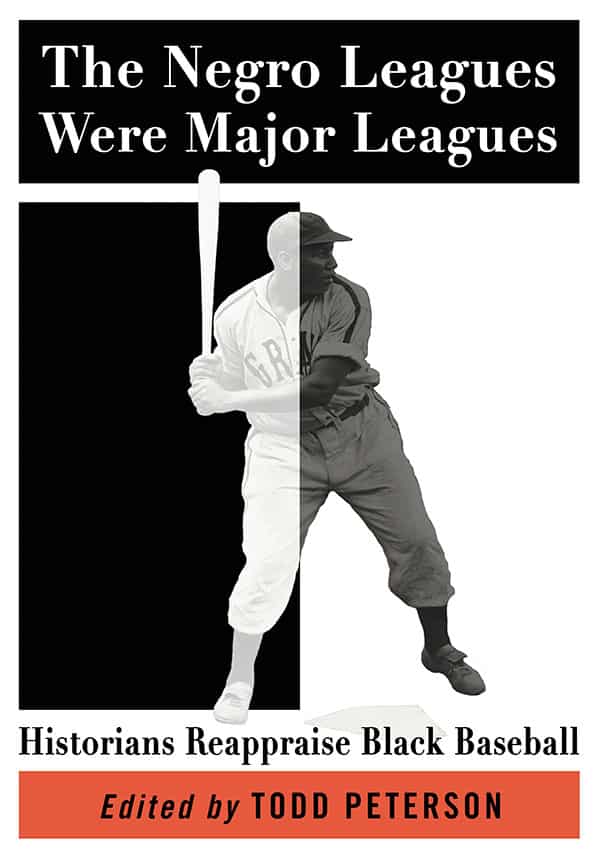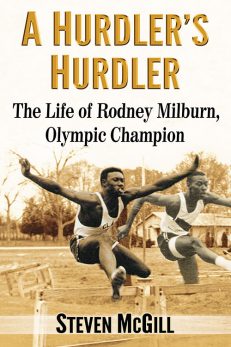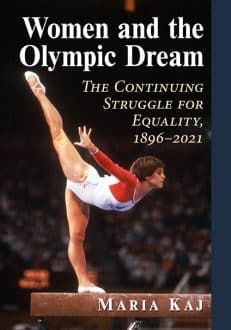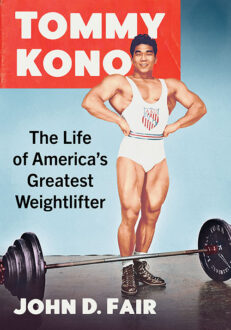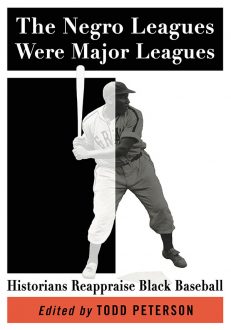Acknowledgments vii
Introduction 1
Part One. Equality 5
Baseball Is the Music of Mathematics
Larry Lester 6
The Case for the Negro Leagues
Todd Peterson 9
Measuring Equality: A Statistical Comparison of the Negro Leagues to the Major Leagues Based on the 1925 Season
Richard J. Puerzer 43
Gray Area: Homestead vs. the Minor Leagues
Scott Simkus 51
The Color of Money: Salaries and Performance in Pre–and Post-Integration Baseball
Michael Haupert 57
Winning in the Crucible of White-Hot Competition
Jeffery S. Williams 75
The Top Ten Reasons Why the Negro Leagues Should Be Declared a Major League
Ted Knorr 98
Part Two. Equity 109
Hotel Resorts and the Emergence of the Black Baseball Professional: Riverine and Maritime Communities, 1867–1890
James E. Brunson III 110
Leading Off: The Cuban Giants
Tony Kissel 140
Rube Foster: Negro League Giant
Robert C. Cottrell 147
John Donaldson: Restoring the Legacy of Segregated Baseball’s Greatest Pitcher
Pete Gorton 166
The Measure of Failure: Atlanta Baseball and Community Development in the 1930s and 1970s
Thomas Aiello 173
Changing the Way They Do Business: Jackie Robinson, Integration and the Origins of Organizational Culture in Organized Baseball
Michael E. Lomax 185
Separate but Unequal
Philip J. Lowry 196
Monuments: The Shaping of Negro Leagues Public Memory
Josh Howard 199
Appendix I: NLB vs. MLB, 1885–1924 209
Appendix II: NLB vs. MLB All-Stars, 1902–1948 214
Appendix III: NLB vs. MLB Batting, Pitching and Fielding Statistics, 1886–1948 227
Appendix IV: Batting and Pitching Statistics of Negro Leaguers in MLB and Triple A 265
Appendix V: Black Minor League Batting and Pitching Leaders, 1946–1975 281
Appendix VI: MLB/NLB Throwback Games, 1994–2019 287
Bibliography 293
About the Contributors 301
Index 303
• Winner, SABR’s Robert Peterson Award for increasing public awareness of Negro League baseball
• “How good were the Negro Leagues? Conventional thinking has dictated that, while stars from the Negro Leagues (Satchel Paige, Josh Gibson, and many others) were every bit the equal of, if not superior to, Major League standouts, the overall quality of Negro Leagues play was inferior to that of the majors. This collection of essays by baseball historians, many affiliated with the Society of American Baseball Research (SABR), tells a different story…. the authors have assembled all the available data and reassessed it in a wealth of revealing ways, including a comparison of all games played between 1920 and 1948 between Negro League teams and major leaguers…Peterson dives much deeper into the stats in his contribution, ‘The Case for the Negro Leagues,’ which analyzes available pitching and hitting records to show that in every area the Negro Leagues either outperform or are equal to Major League numbers…an important contribution to baseball history”—Booklist
• “[A] valuable perspective on a neglected epoch of baseball history…highly recommended”—Choice
• “Essential…recommended”—Midwest Book Review
Review Fix chats with The Negro Leagues Were Major Leagues author, who tells us all about his missions to approximate the skill of Negro League players in comparison to some of Major League Baseball’s biggest stars.
Review Fix: What inspired this book?
Todd Peterson: I was getting tired of hearing in the media and reading in print and online that there was no way to quantify how good the Negro Leagues really were – The main reason given being that NLB record keeping was scattershot and poor, and that there wasn’t enough solid data available. However with the 21st century explosion of digital newspaper databases, we knew that enough box-scores and statistics could be found in papers – black and white alike – from cities all over the country, and combined with info culled from websites such as Seamheads and Baseball-Reference, that there were now in fact many ways to evaluate the quality of segregated black baseball.
Review Fix: What was the writing and editing experience like for you?
Peterson: This book was complete joy to write, and edit. Doing the research was a blast—We were able to produce several charts and appendices concerning every know game played between black clubs and Major League squads and what happened when they did, as well as conducting deep statistical dives into squads such as the Homestead Grays and Cuban Giants. I also got to work with an all-star team of historians and writers—including giants such as Larry Lester, Michael Lomax, and Philip Lowry—who were extremely receptive and easy to work with, and pushed the project in directions I could not have possibly imagined.
Review Fix: What makes it different from other baseball books?
Peterson: The Negro Leagues Were Major Leagues is the first book to really pose and answer the question, “How good were the Negro Leagues?” The book also is a hybrid of sorts—Many of the chapters are statistically driven, while others deal with the more social and cultural aspects of the drive to integration. Others still are straight history. No two chapters are alike, and yet they all deal with the original hypothesis in one way or another.
Review Fix: Did you learn anything you weren’t expecting?
Peterson: The extent to which black squads dominated MLB teams when they played each other—From 1900 through 1948, African American clubs posted a record of 315-282-20 (.527) against big league teams. I was also intrigued by the very tangible effect that the Negro National League and other segregated circuits had on the black game—In their head to head competition against Major Leaguers, black squads improved steadily after the introduction of Negro League play in 1920. There was also the somewhat startling realization that there are now many more black players, albeit many of them Latino, in the Major Leagues today than there ever was in the Negro Leagues. Another theme that emerged during the writing process was the devastating effect that the glacially slow pace of integration had on an entire generation of black players who spent their careers languishing in the minors due to the “fifty-fifty” rule and other racist policies.
Review Fix: What else makes the teams featured here so special?
Peterson: Their indomitable spirit—The black players knew they were just as good as the major leaguers were and they proved it game after game, year after year, in ballparks all over the country. And baseball fans during the segregated era knew it too—Black versus white baseball games were tremendously popular with the American sporting public (white and black professional teams played over 2,500 contests between 1877 and 1948), and no amount of obstructionist legislation by Organized Baseball—and there was a lot of this—could prevent them from being played.
Review Fix: How do you think some of them would fare in today’s MLB?
Peterson: Very, very well – Black major leaguers have performed well above average since integration and have in fact dominated the sport. Black players now annually comprise nearly 40% of MLB’s population. The pitching statistics in the Negro Leagues also compare favorably to those in MLB, very much signifying equivalency. Of course not all negro leaguers would have made it to the Majors, but about 33% of all white big leaguers during segregation wouldn’t have been there either if blacks had been allowed to play.
Review Fix: Who do you think will enjoy this book the most?
Peterson: I think all lovers of baseball, from the casual fan to the die-hard enthusiast, can find something in this volume that they will enjoy and/or be edified by: The book is anchored by several in-depth statistical studies of the Negro Leagues and Organized Baseball; but readers will also find a groundbreaking history of the early black game; a searing critique of Organized Baseball’s fractious relationship with Negro League history; as well as sterling biographies of blackball greats like Andrew “Rube” Foster, John Donaldson, and Jackie Robinson.
Review Fix: What are your goals for this book?
Peterson: The ultimate goal for the book is to foster a conversation about the Negro Leagues and Organized Baseball’s common ancestry and symbiotic relationship. The hope being that both bodies will eventually be recognized as an intertwined whole, so that future generations will learn the history of the game from both the major league and negro league perspectives – That new fans find out about Josh Gibson at the same time they are discovering Babe Ruth. Another hope is that the book can provide a groundswell that will lead to the enshrinement of more blackball-era players, managers, owners, and umpires into the National Baseball Hall of Fame and that the powers that be will see fit to include Negro League statistics on MLB.com, as well as in the official record.
Review Fix: What’s next for you?
Peterson: I have been working steadily on a tome about blackball championship games and playoff contests dating from about 1858 until 1952. There were a lot of them, so it might be a while before the book is published – I’m just now nearing the end of the statistical piece, which is constantly being updated. I’ve discovered that the more you learn about the Negro Leagues, the less you know!
Review Fix: Anything else you’d like to add?
Peterson: I can’t emphasize enough how supportive and patient the folks at McFarland and Company were with this project. I find that I am constantly revising/editing manuscripts way past the seemingly last possible moment, but they never complained and helped steer the book in innumerable ways towards the best possible outcome.

